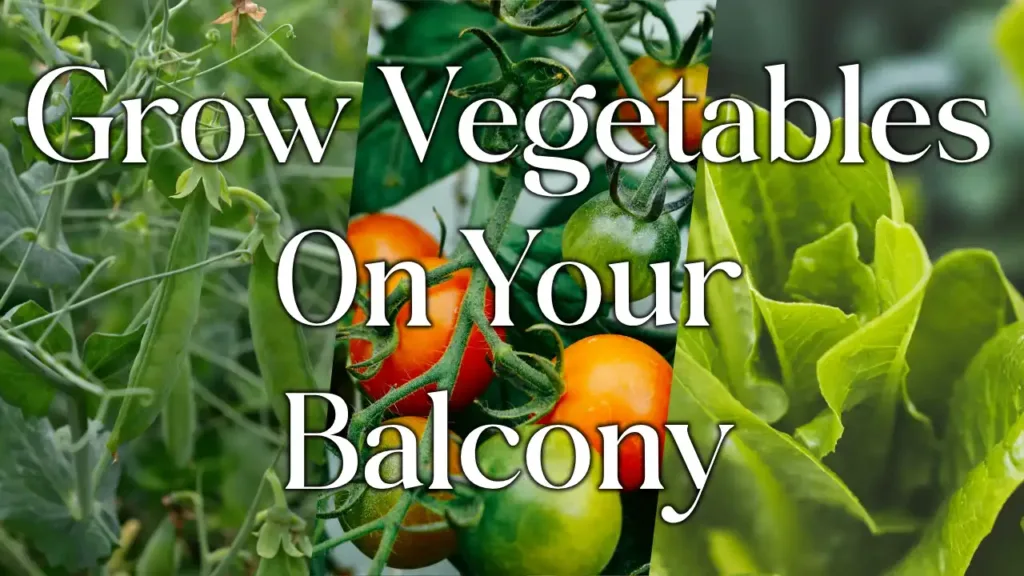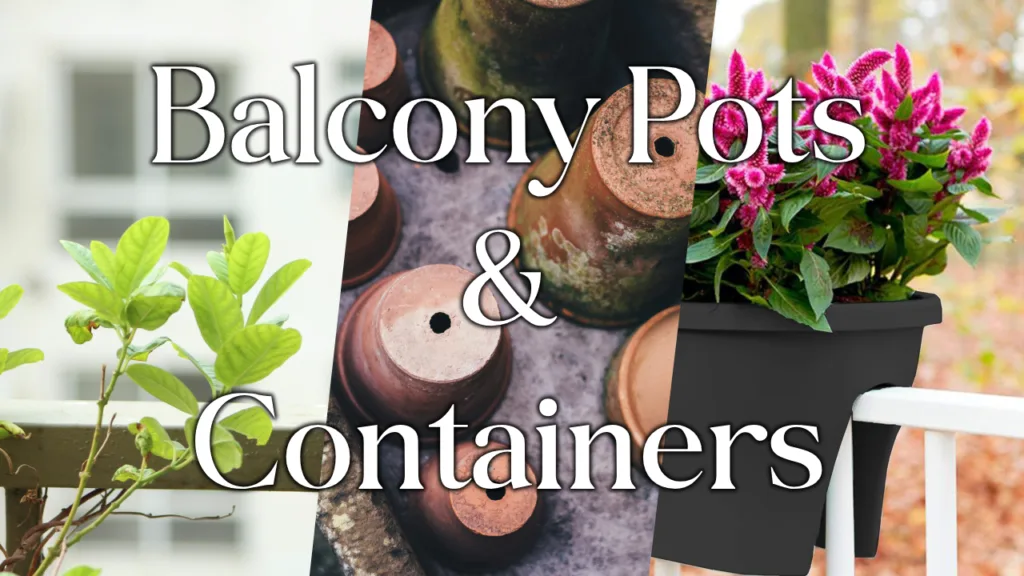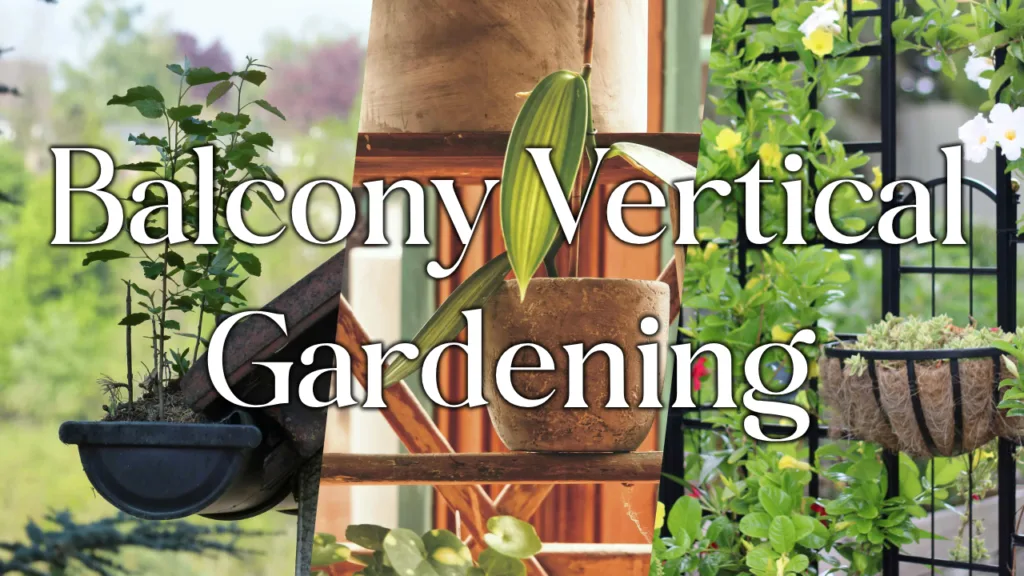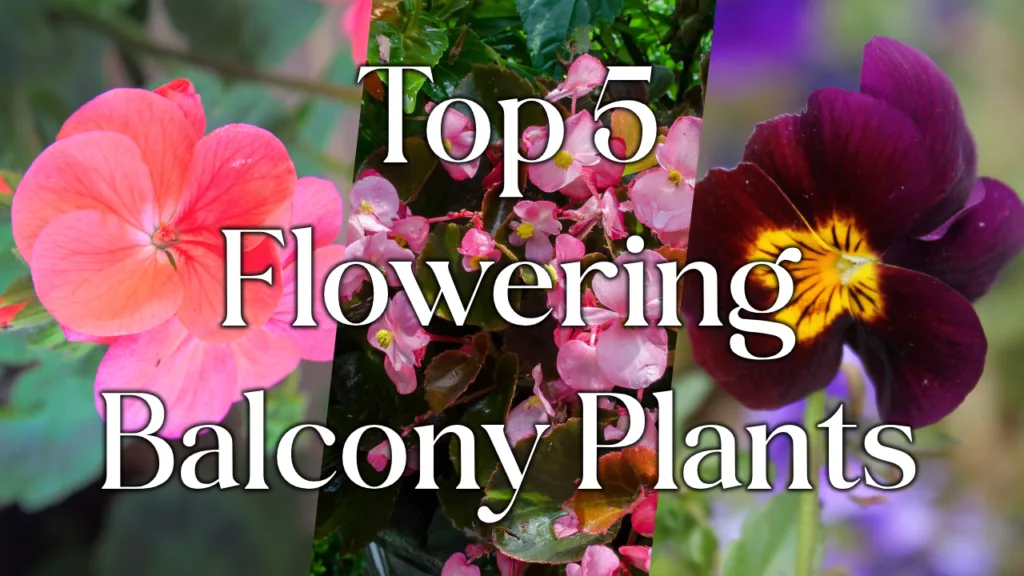Growing your own fruits and vegetables shouldn’t be reserved for those who have a big space. With a little imagination and planning, anyone can create a small balcony vegetable garden.
As someone who’s gardening journey started when I was living in a flat with balcony, I’ve experienced all of the highs and lows of growing vegetables in a small space. So in this article I’ll be sharing exactly what you need to get started and the best vegetables to fit your space.
Contents
What Do You Need To Grow Vegetables On Your Balcony?
Choosing The Right Containers
When choosing the pots for your balcony vegetable patch, make sure to consider the pot size, drainage, and pot material to help your plants grow the most produce. I’d recommend that you opt for pots slightly larger than your plant’s expected size so that it never becomes overcrowded and ensure that pots have a drainage hole at the bottom to prevent roots from sitting in water and rotting.
It’s also important to consider the material of the pot that you’re buying, as materials like terracotta can dry out the soil more quickly than other pots.
Fertiliser
When growing vegetables in pots, it’s incredibly important that you add a high-quality fertiliser to the soil so that the plants get the nutrients they need to grow the produce.
Water
Potted vegetables require more regular watering than those in the ground, especially in windy and hot conditions. We’d recommend checking the soil regularly and watering whenever it feels dry, which might be up to twice per day in the heat of summer.
Supports
Some plants, such as tomatoes and peas, need additional support to stop their stems from falling over and breaking as they grow. If you’re growing climbing plants, then make sure to pick up some stakes to support them early.
What Are The Best Vegetables To Grow On A Balcony?
Tomatoes
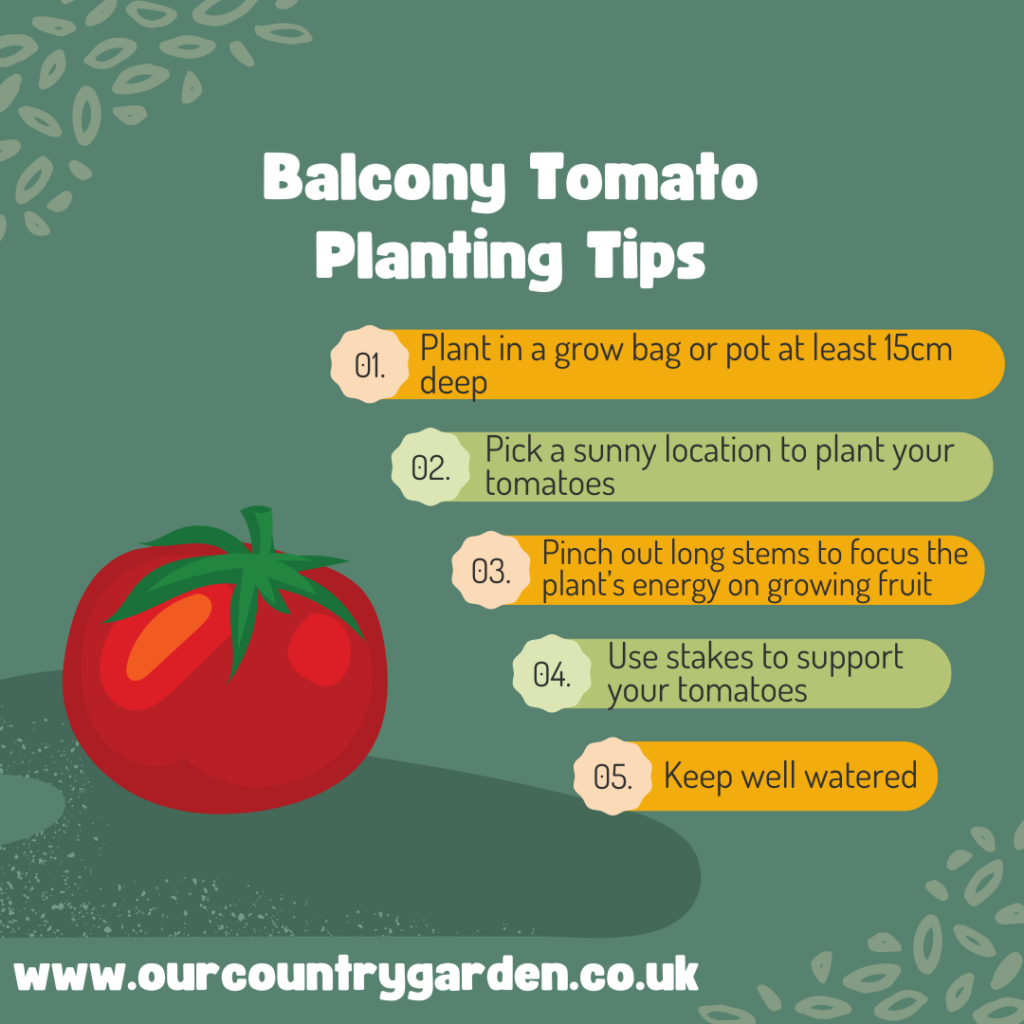
One of the first edibles we grew on our balcony, tomatoes are highly productive and easy to grow in any space, as long as you’ve a good amount of sunlight.
I’d recommend using grow bags, or wide stable pots with well-drained compost to grow them, and make sure to feed them regularly with tomato fertiliser for optimal growth.
Peas
Like tomatoes, peas are another perfect balcony plant for you to start growing. Loving sunny, south-facing spots and needing supports as they start to grow, peas need a bit of planning before planting, but are definitely worth it.
Plant peas a few centimetres below the surface of the soil between February and June and you can expect to be harvesting from July until October.
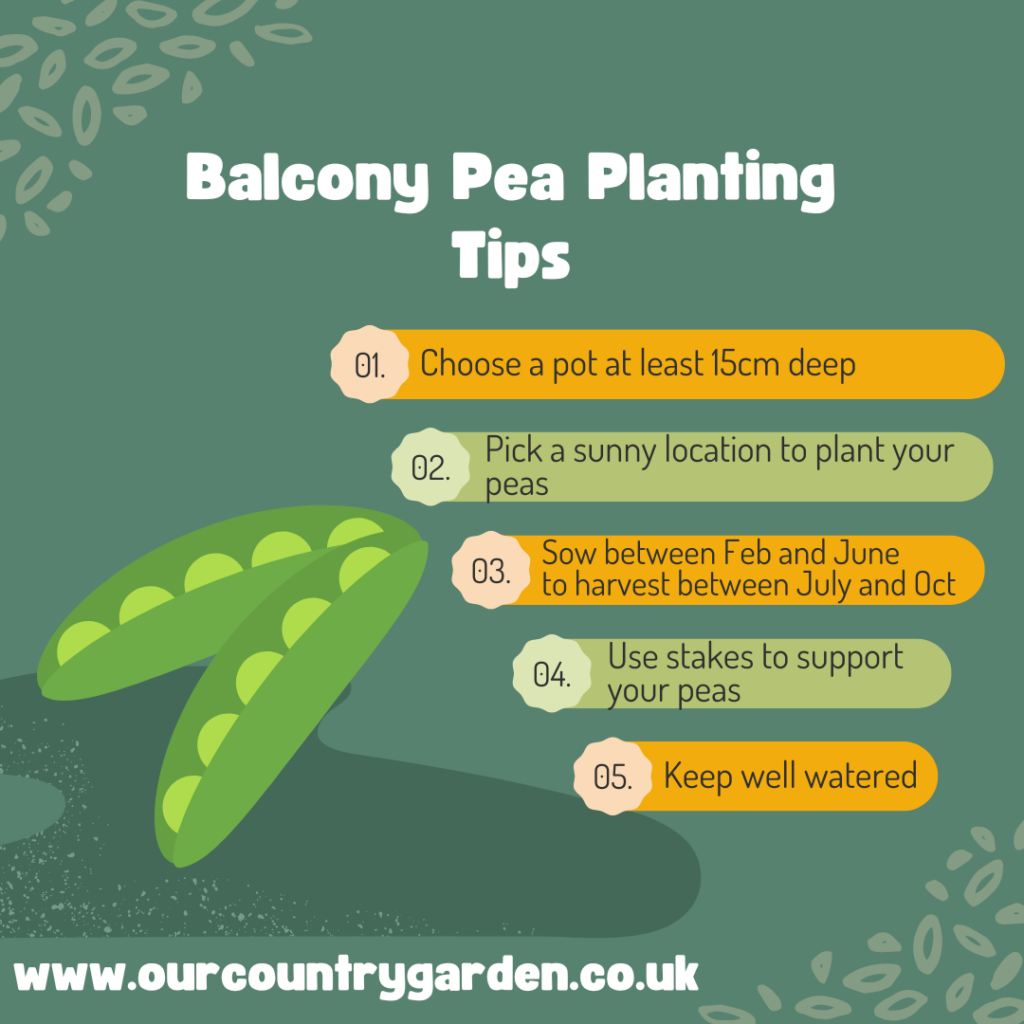
Radishes
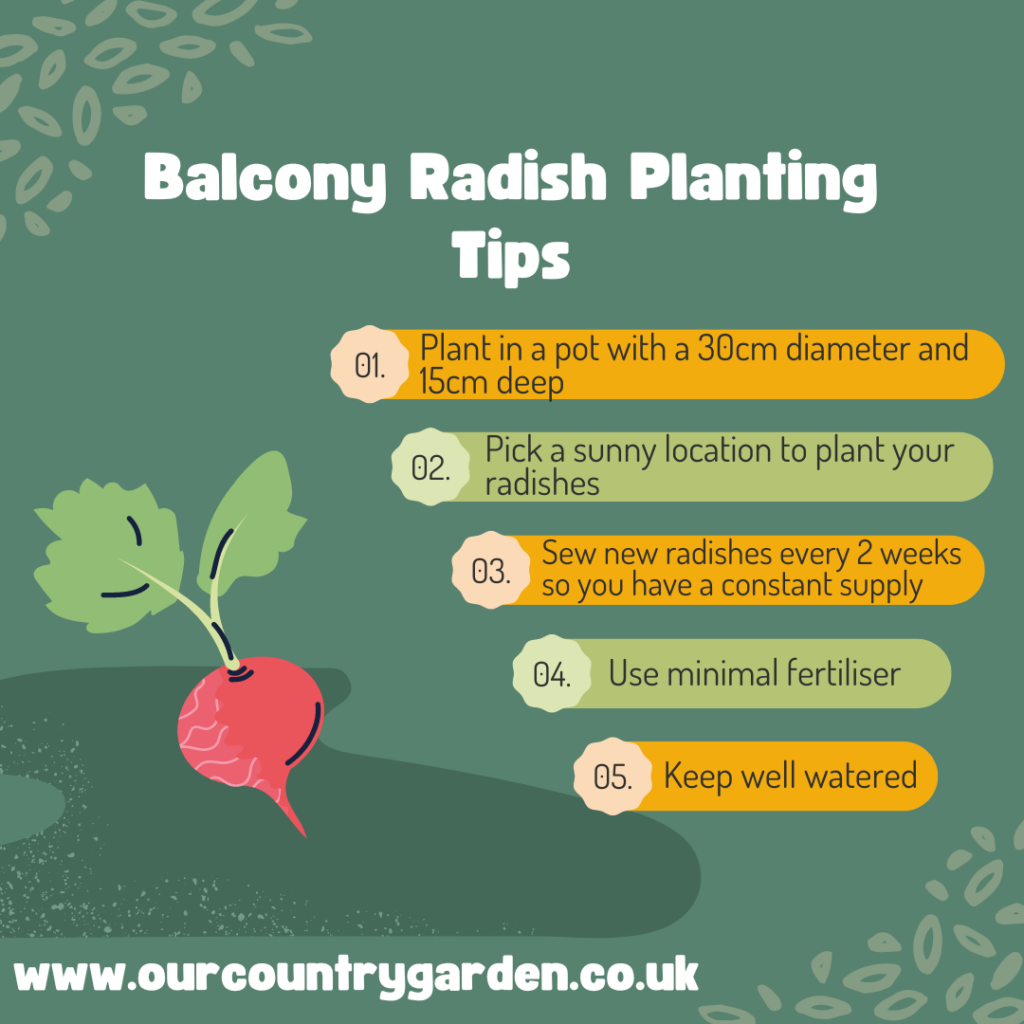
Radishes are an excellent choice for your balcony garden as they’re incredibly quick to grow, with some varieties ready to harvest in as little as a month.
To help your radishes to grow, we’d recommend that you plant radishes around 5cm apart in fertile soil and water them regularly. As they don’t grow too big, you can safely grow radishes in smaller pots, making them a great addition to your space no matter the size of your balcony.
Beetroot
Like radishes, beetroot is another fast-growing vegetable that thrives in medium-sized containers with rich, well-draining compost.
The main thing to look out for with beetroots is to ensure that they’re regularly watered to prevent them from bolting or splitting.
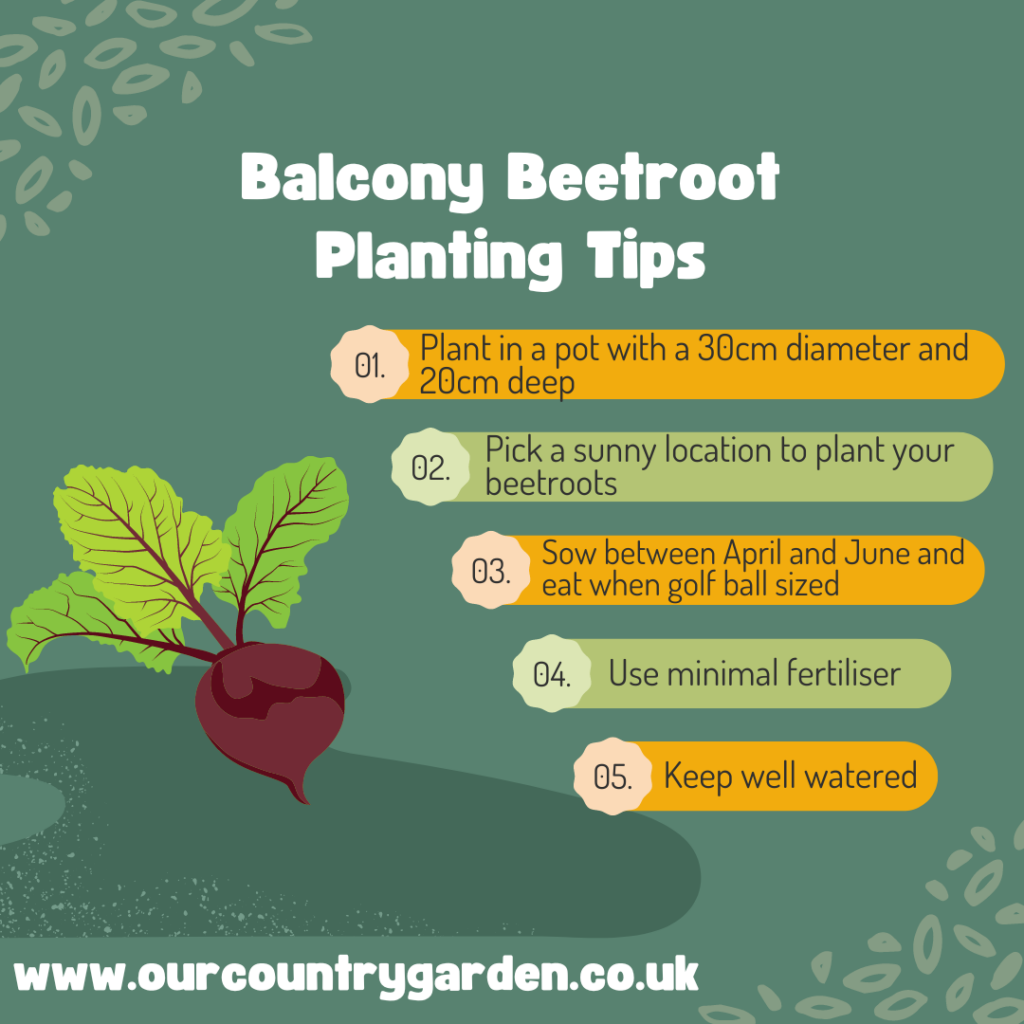
Lettuce
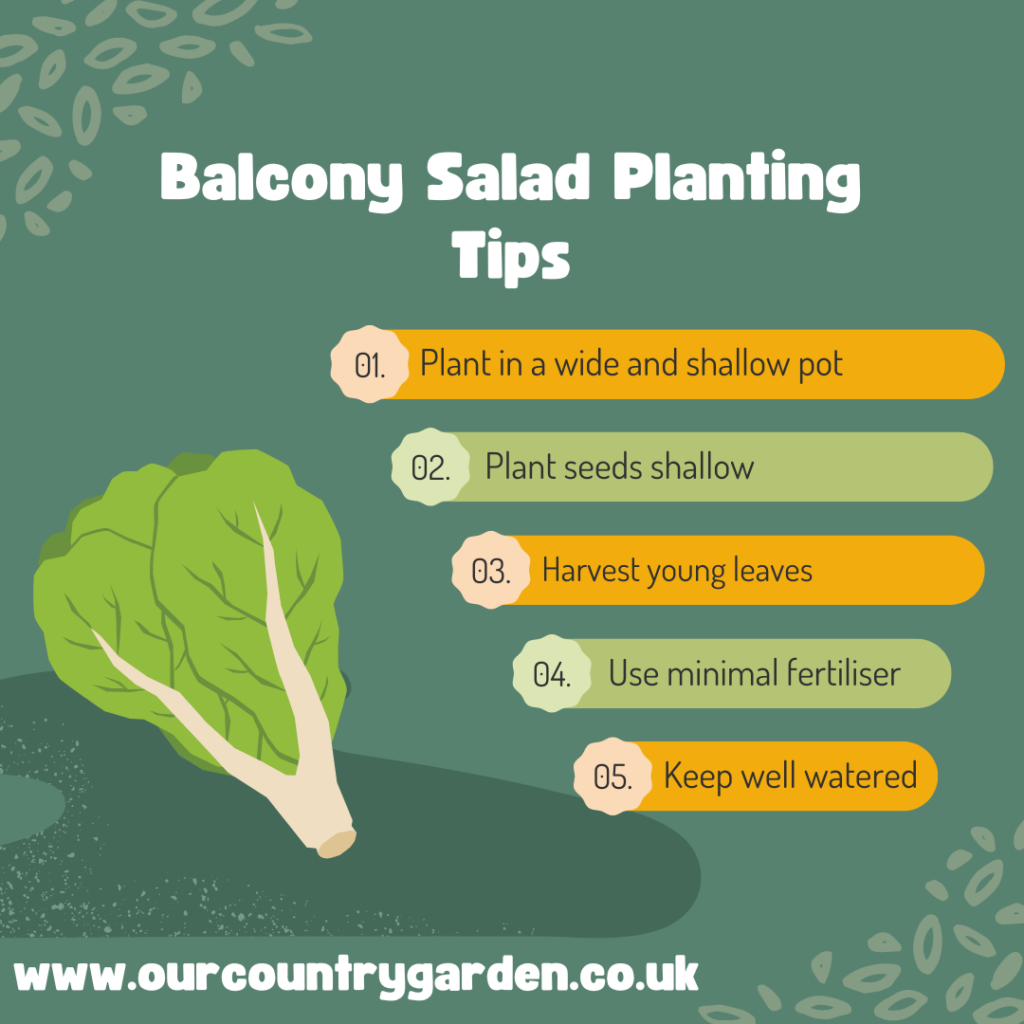
Cut-and-come-again lettuce varieties are perfect any balcony as they offer continuous produce in small containers.
To keep your lettuce healthy, ensure that you regularly water and keep harvesting to prevent the lettuce from turning to seed.
Balcony Vegetable Garden Tips
If you want to make the most of your balcony and get even more produce, take a look at our bonus tips to help you get the most out of your plants.
Maximise Space With Vertical Gardening
If you’re looking to add more plants, but have run out of railing and floor space to put them, have a look into vertical gardening to create additional layers for planting. Click here to get some inspiration about how you can get started with your vertical garden.
Use Companion Plants For Natural Disease And Pest Control
If like us you want to protect your vegetables from pests and disease in a natural way without using harsh chemicals, then consider planting some companion plants in your pots alongside your vegetables.
We’d recommend planting nasturtiums and marigolds near your vegetables as they do a great job of reducing pests while adding some colour to your balcony garden too!
Conclusion
You should now be well on your way to creating your own vegetable garden on your balcony. If you’re interested in growing berries on your balcony, check out our complete guide here. Otherwise, see our guide to the best flowering perennials for your balcony space.
